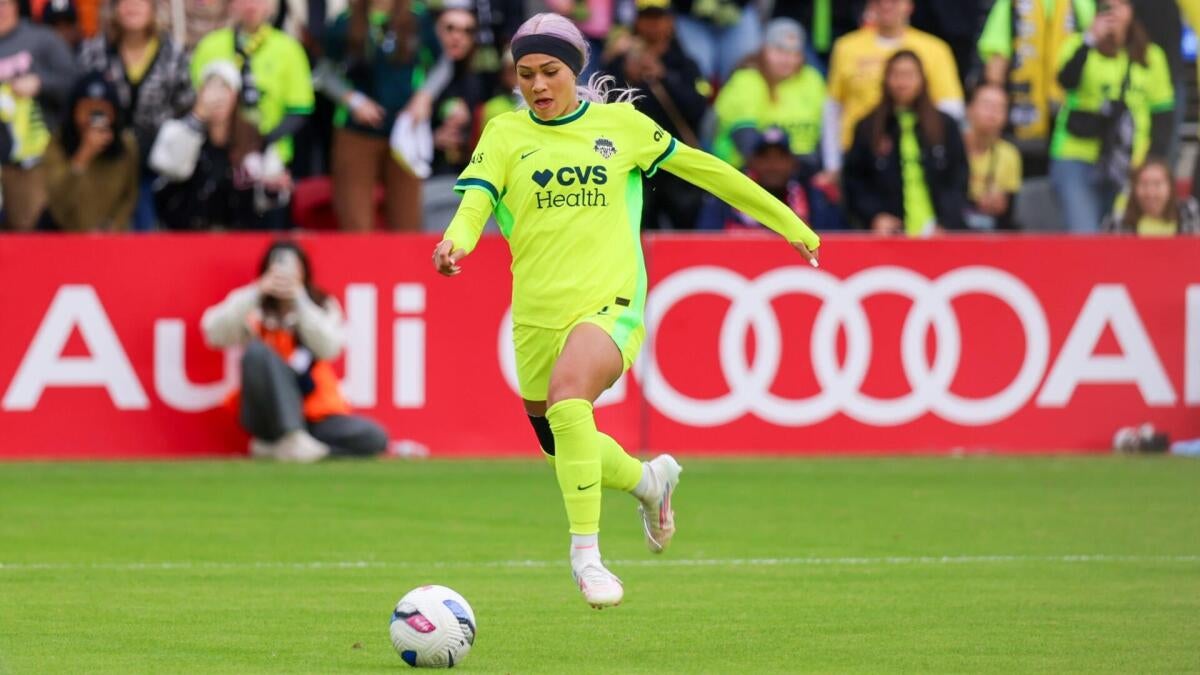As the National Women's Soccer League (NWSL) prepares for its Championship match this Saturday, a significant off-field storyline is capturing attention: the future of Trinity Rodman, one of the most promising stars of the U.S. women’s national team (USWNT). With Rodman’s contract set to expire at the conclusion of the 2025 season, a competitive landscape is emerging around her next destination, prompting league commissioner Jessica Berman to publicly affirm the NWSL’s commitment to retaining her talent.
Rodman currently plays for the Washington Spirit, who will face Gotham FC in Saturday’s championship game. Her contract with the Spirit runs through the end of the 2025 season, but beyond that, her future remains uncertain. While the Spirit have expressed interest in re-signing her, reports indicate that several other clubs have entered the fray, including three teams from England’s prestigious Women’s Super League (WSL) and D.C. Power, a team in the newly sanctioned USL Super League. According to The Athletic, these clubs may be able to offer more lucrative financial packages than the Spirit due to different salary restrictions, creating a bidding war atmosphere for Rodman’s next contract.
One of the main challenges facing the Spirit—and the NWSL as a whole—is the league’s salary cap structure. Currently, the NWSL operates with a salary cap that limits how much teams can spend on player salaries. Set at $3.3 million for the 2026 season, the cap is scheduled to increase incrementally each year until it reaches $5.1 million by 2030. However, this system has raised concerns about the league’s ability to keep its top stars, like Rodman, especially when competing against clubs outside the NWSL that may not be bound by such restrictions or have different financial resources.
Commissioner Jessica Berman addressed these concerns in a press conference on Thursday, emphasizing that the league is committed to keeping Rodman—and other elite players—within the NWSL. “We want those top players here in the NWSL and particularly, we want Trinity in the NWSL and we will fight for her,” Berman stated, underscoring the league’s determination to retain its leading talent.
Berman also highlighted that players consider more than just salary when evaluating their career options. “Compensation matters, but players also think about compensation not just from the perspective of what their club is paying them,” she explained. She pointed out that the U.S. market offers unique advantages for female athletes and women’s sports, including strong fan interest and commercial support, which can be difficult to match internationally. Moreover, Berman outlined what she referred to as the “other three Cs” that players weigh: competition, club, and coaching. According to her, the NWSL provides a holistic environment where players can perform at their best, feel valued, and have access to top-tier training facilities and coaching staff. This, she believes, makes the league an attractive destination beyond the financial considerations alone.
The salary cap framework itself stems from the collective bargaining agreement (CBA) between the NWSL and the NWSL Players Association, with the most recent agreement ratified in 2024. The CBA sets the rules for salary cap growth but also allows for adjustments beyond the scheduled yearly increases if necessary. However, Berman did not indicate any immediate plans to alter the current cap structure. She emphasized that the league views itself as a business that must balance investment in players and facilities with sustainable revenue growth. “We do not believe that NWSL is a charity,” she said. “We believe it’s a business, and in order to treat it like a business, it means that the amount that our teams are investing has to have a rational relationship to revenue.”
Berman noted the league’s progress in recent years, highlighting significant commercial growth both at the league level and within individual clubs. She stressed that any decisions about player compensation and investment must be made in the context of the league’s overall business health and long-term viability.
If Rodman ultimately chooses to leave the NWSL, she would join a growing trend of USWNT players moving overseas to continue their careers. Recent high-profile moves include players like Alyssa Thompson and Naomi Girma, who have sought opportunities in European leagues. However, Rodman’s potential move to the USL Super League with D.C. Power would represent a unique departure from this pattern

